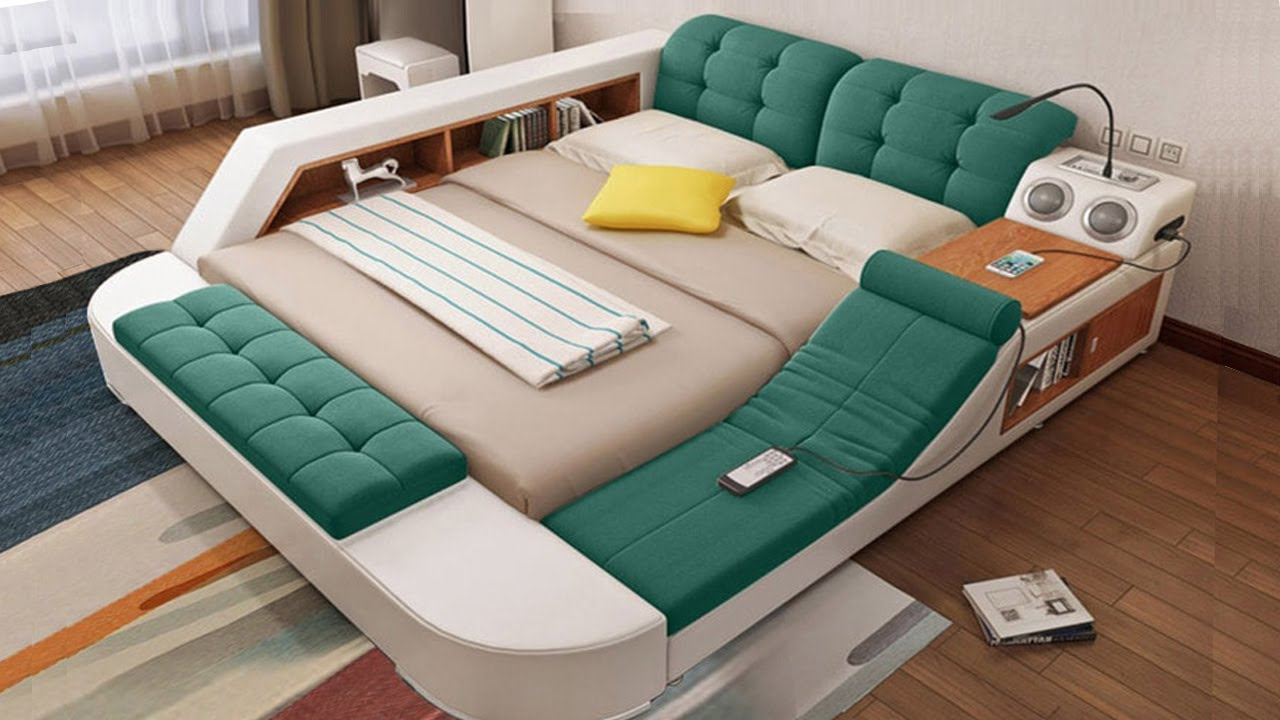One of the most crucial components of human life is sleeping. A good night’s sleep is critical for physical and mental well-being. With technological innovation, we have witnessed the introduction of smart beds that claim to deliver a good sleeping experience. So, are these beds truly superior to traditional beds? In this essay, we will compare smart beds to ordinary beds to see which one is superior.
Smart Bed VS Conventional Bed
Which One Is Best?

Smart Bed
【 Benefits of Smart Bed 】
- One of the most significant benefits of a smart bed is that it provides tailored comfort. Users may personalize their sleeping experience with adjustable firmness, temperature control and other options. This is especially handy for couples who have various sleeping preferences. A smart bed, for example, can be modified to accommodate both tastes if one person prefers a harder mattress while the other prefers a softer one.
- Another benefit of smart mattresses is that they can monitor your sleeping patterns. This information can be used to identify any sleep disorders you may have and to help you make changes to enhance your sleep quality. This is especially beneficial for persons who suffer from sleep disorders like insomnia or sleep apnea. They can discover problems and improve their sleep quality by recording their sleep patterns.
- Temperature control options are also available on smart beds. This means that consumers can customize the temperature of their bed to their preferences. This is especially important for persons who live in high-temperature areas. For example, in the summer, users can set the temperature to be cooler, while in the winter, they can set it to be warmer.
However, smart beds do have some disadvantages.
- For starters, they are more expensive than standard beds. Smart beds can range in price from $1,000 to $5,000 or more, although standard beds can be purchased for as little as $200. As a result, not everyone can afford a smart bed.
- Second, smart beds are powered by electricity. This means that customers must have access to a power source in order to utilize the bed. This can be a problem for people who live in places with frequent power outages or who choose a more eco-friendly way of life.
- Finally, smart beds can be difficult to set up and operate. With so many features and settings, some users may become overwhelmed. This can be aggravating for folks who desire a plain and simple sleeping experience.

Conventional Bed
【 Benefits of Conventional Bed 】
- For starters, they are less expensive than smart beds. This makes them more accessible to a broader range of people. Also, traditional beds do not require energy to function, making them more environmentally friendly.
- Second, standard beds are straightforward to use. Users can simply lie down and sleep because there are no difficult features or settings. This is especially handy for folks who prefer a simple sleeping experience without any difficulties.
- Finally, traditional beds have been around for ages and have proven to be durable. They are well-known for their durability, and with proper maintenance, they can last for many years. This means that customers can expect to get their money’s worth out of a standard bed.
However, conventional beds also have some disadvantages.
- First, they do not provide individual comfort. Users must make do with a one-size-fits-all sleeping experience because there are no adjustable firmness or temperature control capabilities. This can be painful for some people, especially those who suffer from back or joint pain.
- Second, traditional beds do not monitor sleep habits. This means that people cannot discover any problems with their sleep and seek to improve their sleep quality.
- Third, traditional beds lack temperature control options. This means that consumers may experience discomfort during severe temperatures, which may impair their sleep quality.
Conclusion
To sum up, both smart beds and traditional beds offer advantages and downsides. Smart beds provide customized comfort, sleep tracking, and temperature control, but they are more expensive and require electricity to operate. Traditional beds, on the other hand, are less expensive, easier to use and more durable, but they lack tailored comfort, sleep tracking and temperature control functions. The decision between a smart bed and a traditional bed ultimately boils down to personal desire and budget.